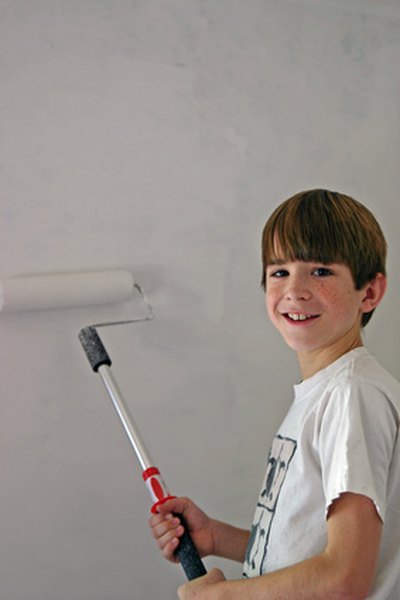Does Repainting the Interior of My Home Add to the Cost Basis?
Painting usually doesn't add to the cost basis of your home.
boy painting image by sonya etchison from Fotolia.com
Repainting is one way to freshen up your house before you sell it, and as home improvements go, painting is less expensive than redoing your floors or remodeling your kitchen. But even if you do all the work yourself, painting the interior of an entire house can set you back a lot of money. If you could use that cost to increase the cost basis of your house, and thus reduce the profit on which you might have to pay capital gains tax when you sell your house, you’d probably feel even better about your new paint job. However, the Internal Revenue Service has strict rules about which improvements add to your cost basis.
Basis
The cost basis of your house is the original sales price of the house, plus many of your settlement costs. Improvements you make to your home may add to your cost basis. In order to add to your cost basis, an improvement must adapt your home or part of your home to a new use, prolong your home’s useful life or add to the value of your home. Unless the improvement meets one of these criteria, you can’t add the cost of the improvement to your basis. When you figure the costs of the improvement, you must use the actual cost for both the materials and labor. If you do the work yourself, you can’t include labor costs.
Qualifying Improvements
Examples of improvements that qualify to increase your cost basis include adding a room, converting a garage, finishing a basement, redoing floors, insulating the attic, updating the kitchen, installing a sprinkler system or a swimming pool or building a deck. If the improvement increases your home’s value by adding a desirable feature, such as a deck or a third bedroom, it adds to your cost basis. If the improvement is a permanent part of your home, such as built-in appliances or a whole-house fan, it also increases you basis. You can only add in the cost of an improvement once. For example, if you live in a house for 20 years and at the end of 10 years you build a deck, then at the end of 20 years you tear out that deck and put in a new deck, you can only add the cost of the most recent deck.
Maintenance Improvements
Improvements you make to maintain the house, but that don’t substantially change the house or increase its value, don’t qualify as costs you can add to your basis. Painting usually falls into this category. Yes, painting makes your house look better and may increase your odds of selling the home. But presumably the rooms were painted before this new paint job. Painting didn’t add to the home’s value or substantially improve the home or adapt it to another purpose.
Painting Exceptions
There are a couple of instances, however, where the cost of painting could be considered as adding to your home’s basis. If you remodel your kitchen, for example, and the paint job is part of that remodel, you don’t have to exclude the painting portion of the remodel from the amount you add to your cost basis. Or, if your home is damaged in a fire or flood and you repaint the interior as part of repairs to restore the home’s value and make the home livable once more, then the IRS allows you to include the cost of painting in your cost basis.
References
Writer Bio
Cynthia Myers is the author of numerous novels and her nonfiction work has appeared in publications ranging from "Historic Traveler" to "Texas Highways" to "Medical Practice Management." She has a degree in economics from Sam Houston State University.

